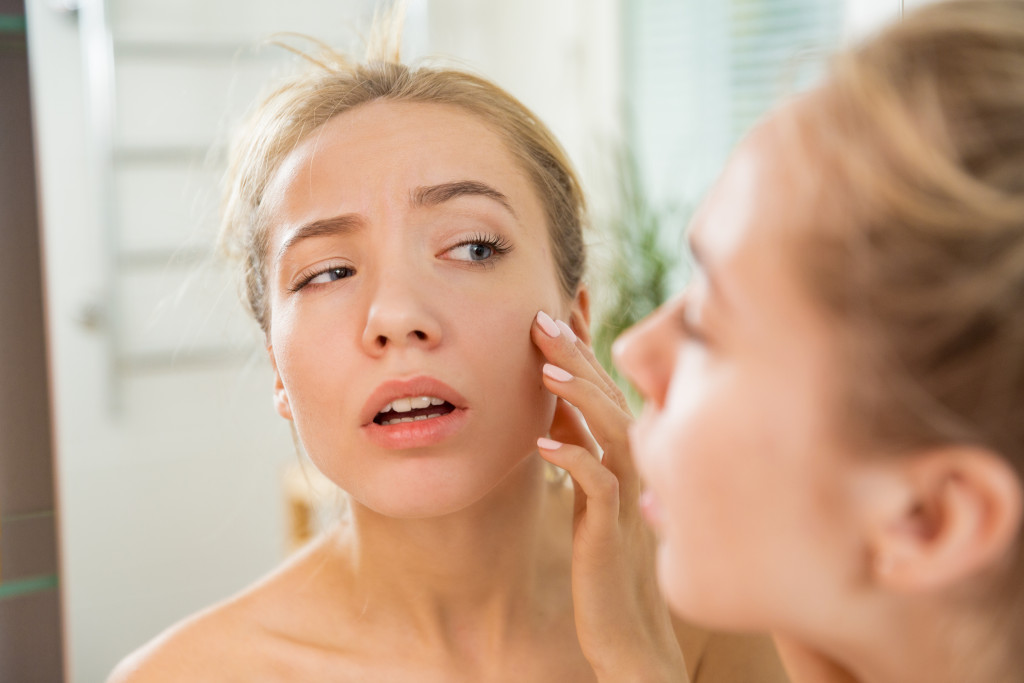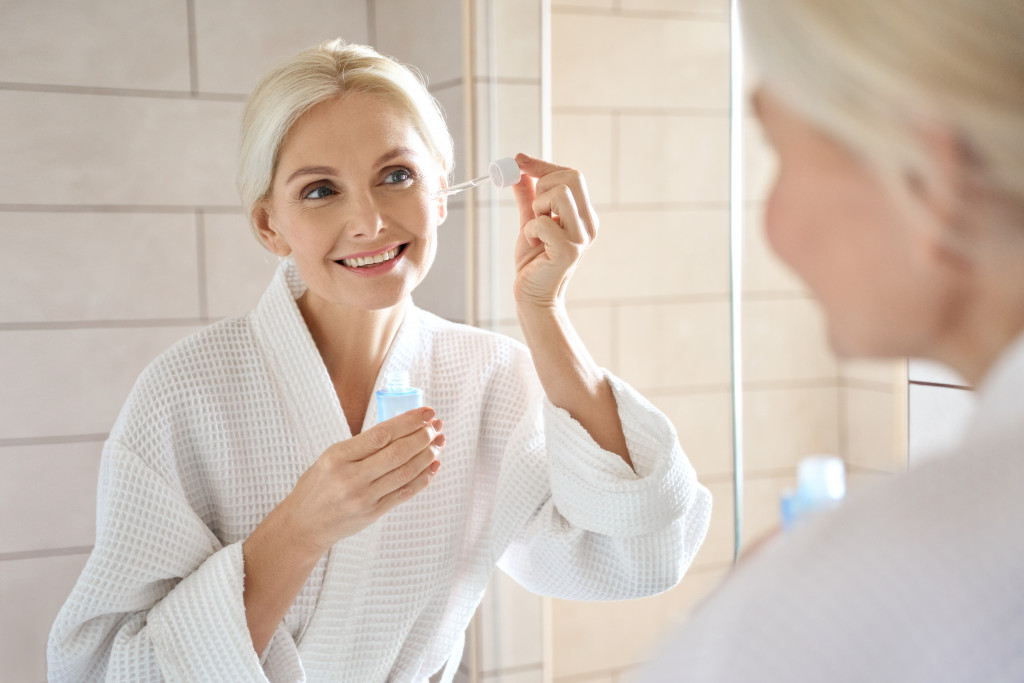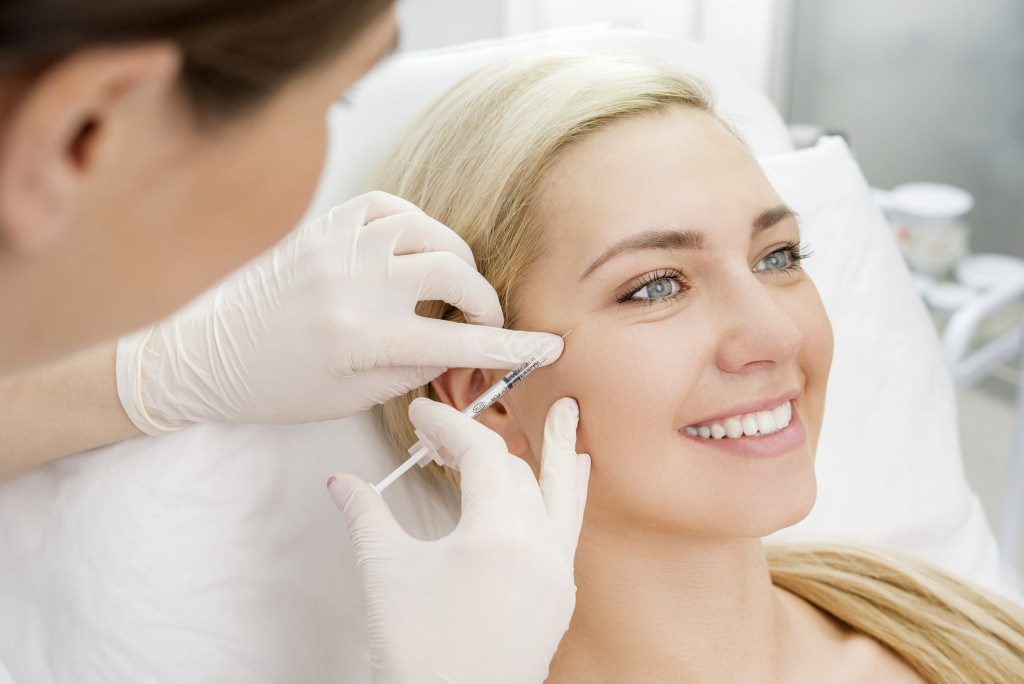• Photoaging is the premature aging of the skin due to overexposure to UV radiation from the sun or tanning beds.
• Prevent photoaging by wearing sunscreen daily and protecting your skin through antioxidants like vitamins A, C, E, and selenium.
• Avoiding smoking, drinking plenty of water, getting enough sleep, and exercising regularly are important lifestyle habits for fighting photoaging.
• Photoaging cannot be reversed, but some treatments can help slow down the effects of aging and reduce wrinkles.
Have you ever looked at your face in the mirror and noticed a few more lines or wrinkles than you used to have? Or you may have noticed some dark spots or discoloration that wasn’t there before. Everybody ages, but did you know that there is a term for accelerated aging caused by sun exposure to ultraviolet (UV) radiation? That condition is called photoaging.
Here’s a breakdown of everything you need to know about photoaging and how to protect yourself from it.
What is Photoaging?
Photoaging is a term used to describe premature aging of the skin due to overexposure to UV light from the sun or other sources such as tanning beds. This type of skin damage can occur over time, resulting in wrinkles, sagging skin, dark spots, and an increased risk for skin cancer. When it comes to photoaging, prevention is key.
How to Prevent Photoaging
Protecting yourself from UV light daily is the best way to prevent photoaging. This does not mean not leaving the house and avoiding the sun entirely. Instead, it means taking necessary precautions to protect your skin from damaging UV rays. Here are some tips for preventing photoaging:
Wearing Sunscreen
Sunscreen is one of the best ways to protect your skin from photoaging. Wearing SPF-30 or higher sunscreen daily provides excellent protection against sunburns and other skin damage caused by UV rays.
Reapply sunscreen every two hours or after swimming or sweating heavily. Additionally, try to stay out of direct sunlight during peak times when UV rays are strongest (usually between 10 am-4 pm). If you must go outside during those times, wear protective clothing like wide-brim hats and long sleeves.
Antioxidants
Antioxidants like vitamins A, C, E, and selenium help protect your skin from free radicals that can lead to premature aging. Vitamins A and C can help reduce wrinkles and strengthen the outer layer of your skin for better protection against environmental damage.
You can find these vitamins in foods like spinach, sweet potatoes, carrots, oranges, strawberries, bell peppers, kale, etc., so try adding more antioxidant-rich foods to your diet. You can also apply Vitamin C Serum which helps brighten the skin and reduce dark spots due to photoaging. This serum acts as a protective barrier against UV rays. Use this serum at least twice daily (before going out into the sun and before bed) for the best results.
Lifestyle Habits
In addition to using sunscreen regularly and eating plenty of antioxidant-rich foods, there are some lifestyle habits that you can practice to help slow down aging. These include the following:
- Avoiding smoking cigarettes (or quitting if you already smoke)
- Drinking plenty of water each day (8 glasses per day is ideal)
- Getting enough sleep each night (7-9 hours)
- Exercising regularly (aim for 30 minutes every day!)
- Managing stress levels by practicing mindfulness/meditation/yoga etc.
- Exfoliating your face once or twice a week with a gentle scrub
Can You Reverse Photoaging
Unfortunately, once skin damage has occurred due to photoaging, it cannot be reversed. That’s why prevention is so important! But there are treatments available that can help slow down the effects of aging and reduce wrinkles. To give you an idea, here are some anti-aging treatments that you can consider:
Chemical Peels
This treatment is done by exfoliating the top layers of damaged skin to reveal a younger-looking complexion beneath. These are applied in various concentrations to target skin concerns like sun damage, wrinkles, and dark spots. Chemical peels can minimize wrinkles, reduce sun spots and discoloration, and improve the texture of your skin.
Dermal Fillers
This treatment is done by injecting hyaluronic acid into the skin to fill fine lines and wrinkles. The effects of dermal fillers are temporary but can help you achieve a smooth, youthful-looking complexion if maintained regularly.
Microdermabrasion
This treatment is done by gently sanding the skin with a minimally abrasive instrument to remove the thicker, uneven outer layer. Microdermabrasion can help reduce sun damage, discoloration, light scarring, and stretch marks. It also helps to improve circulation, boosting collagen production for firmer, younger-looking skin.
Overall, photoaging can be a concern for many people. However, by practicing preventative measures and incorporating anti-aging treatments into your routine, you’ll be able to keep your skin looking healthy and youthful for years to come.



